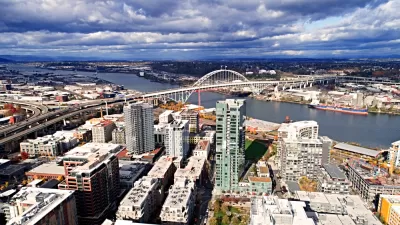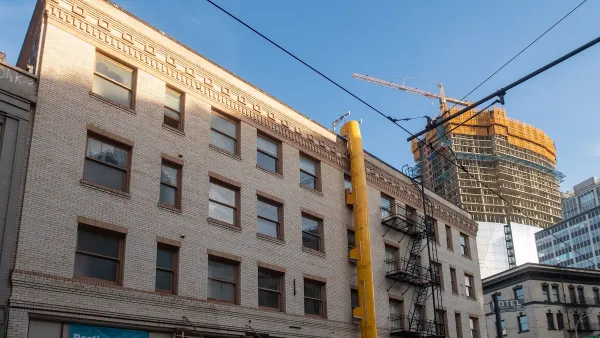A deep dive into what a Portland rent check pays for sheds light on strategies to help lower rising rents.

Michael Andersen recently crunched some numbers to answer two questions. First, if we take a hypothetical rent check from a Portland apartment and follow the money, what is the breakdown? And second, what does that tell us about ways to bring down rental costs in a city where more and more people are struggling to find affordable housing?
For the first part of his exercise, Andersen identified 11 factors that influence the cost of rent – everything from marketing and parking subsidies to property taxes and property management costs. He found that by far the largest chunk of a rent check went to housing materials and construction costs:
I assumed $194 per square foot of living space for work done in 2016 and 2017. It came to about 34 percent of project costs, the biggest single share of today’s rent check – and also the driving force behind most of the other factors, from architects’ fees to bank loans. For every $1 that hard costs rise or fall, total project costs rise or fall $1.31.
He then used this insight to take a closer look at nine ways rental prices could be brought down, some of which he acknowledges are less realistic than others. For example, Andersen suggests reducing public services (lowering the average rent by $85 a month) and making small apartments legal again ($158 a month).
In the end, he points to $832 of potential savings. All this, says Andersen, assumes that developers will pass on these savings to renters, which in the short-term they may not be inclined to do. However, the effect over time is also important: lower costs encourage overbuilding, which then drives down the price of housing.
Andersen says that lower-income residents are not going to be able to afford even the cheaper rent he is proposing, and more affordable units in older buildings are where they will end up. But, rents in newer buildings directly affect rents in older ones and so, argues Andersen, dealing with the cost of new buildings creates an important ripple effect throughout the housing market.
FULL STORY: What Makes Portland's New Apartments So Expensive?

Maui's Vacation Rental Debate Turns Ugly
Verbal attacks, misinformation campaigns and fistfights plague a high-stakes debate to convert thousands of vacation rentals into long-term housing.

Planetizen Federal Action Tracker
A weekly monitor of how Trump’s orders and actions are impacting planners and planning in America.

In Urban Planning, AI Prompting Could be the New Design Thinking
Creativity has long been key to great urban design. What if we see AI as our new creative partner?

King County Supportive Housing Program Offers Hope for Unhoused Residents
The county is taking a ‘Housing First’ approach that prioritizes getting people into housing, then offering wraparound supportive services.

Researchers Use AI to Get Clearer Picture of US Housing
Analysts are using artificial intelligence to supercharge their research by allowing them to comb through data faster. Though these AI tools can be error prone, they save time and housing researchers are optimistic about the future.

Making Shared Micromobility More Inclusive
Cities and shared mobility system operators can do more to include people with disabilities in planning and operations, per a new report.
Urban Design for Planners 1: Software Tools
This six-course series explores essential urban design concepts using open source software and equips planners with the tools they need to participate fully in the urban design process.
Planning for Universal Design
Learn the tools for implementing Universal Design in planning regulations.
planning NEXT
Appalachian Highlands Housing Partners
Mpact (founded as Rail~Volution)
City of Camden Redevelopment Agency
City of Astoria
City of Portland
City of Laramie





























